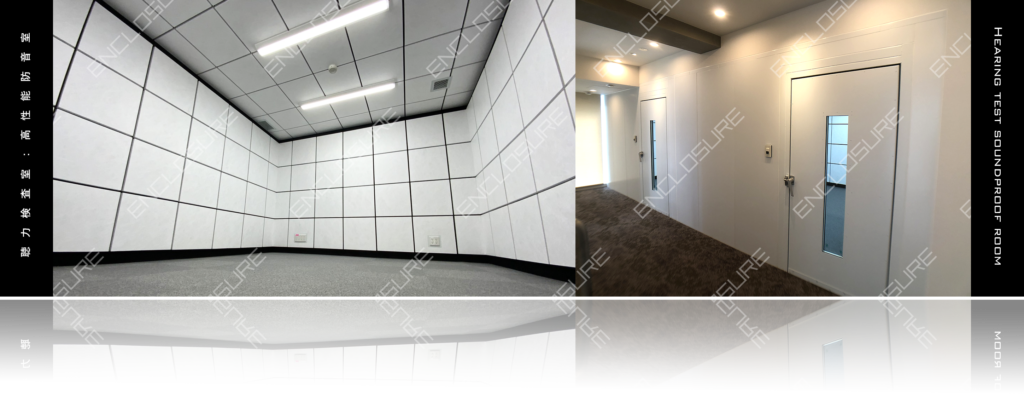A Smarter Choice for Better Results: Why New Construction Is Better Than Renovation for Audiometry Rooms – Acoustic performance isn’t easy to fix later. Here’s why it’s best to build it right from the start –

◆ Can You Really Rely on Renovating an Existing Room?
“Can’t we just convert one of our existing rooms into an audiometry room by adding soundproofing?”
This is a common question we hear from hospitals and clinics. Renovation may sound simpler or more cost-effective—but when it comes to the precision acoustics required for hearing assessments, it’s rarely the best path.
Why? Because acoustic performance isn’t something you can simply bolt on later. It depends on factors like building structure, HVAC systems, and room layout, which are often fixed in renovations.
◆ 3 Major Acoustic Challenges That Renovations Often Face
1. Noise Travels Through Hidden Paths in the Building
Beams, ceilings, and walls can act as unseen conduits for noise.
Even if you add soundproof walls, structural noise from adjacent rooms can still find its way in.
2. Reusing Old HVAC Systems Often Introduces Noise
Ventilation ducts and fans from the original room may be too noisy to meet audiometry standards.
The benchmark of under 20 dB of background noise, as required by international standards, is often out of reach.
3. Limited Space Means Limited Performance
When wall thickness or layout changes aren’t possible, you may be forced to use thinner, less effective materials, compromising the final sound environment.
◆ What You Can Do with a Purpose-Built Audiometry Room
Starting from scratch means you can design with acoustic excellence in mind from day one.
✅ Block unwanted noise paths structurally
→ No sound leakage from above ceilings or under floors.
✅ Integrate quiet HVAC solutions from the start
→ Balanced airflow and silence, without retrofitting workarounds.
✅ Plan for flexibility and future use
→ Add space for hearing aid fitting or ENT consultations, if needed.
◆ The Cost Reality: New Builds Are Often More Predictable
Renovation may seem cheaper at first glance, but it can involve hidden costs like:
- Structural surveys
- Redesigns due to acoustic test failures
- Delays caused by unexpected limitations
In contrast, new construction is more predictable, scalable, and easier to manage—especially when performance is non-negotiable.
◆ Better Sound, Better Workflow: Plan It Right from the Start
New builds also allow you to consider facility-wide acoustic zoning.
Audiometry rooms can be placed away from high-noise areas like ERs, labs, or imaging suites, ensuring a naturally quieter baseline.
◆ Summary: Acoustic Environments Are Hard to Fix—So Get It Right First
If your audiometry room isn’t quiet enough, you can’t just fix it later.
In many cases, what starts as a “quick renovation” ends up being more costly, time-consuming, and frustrating than building new.
That’s why we recommend starting with a space designed specifically for audiometry—quiet, precise, and compliant from the ground up.
At Enclosure, we specialize in building turnkey audiometry rooms tailored to medical facilities of all sizes.
From layout to equipment integration, our team supports you every step of the way.
